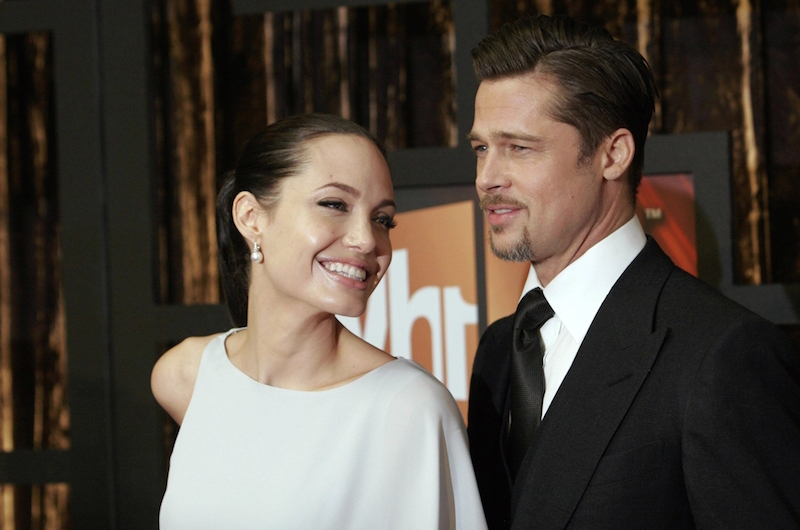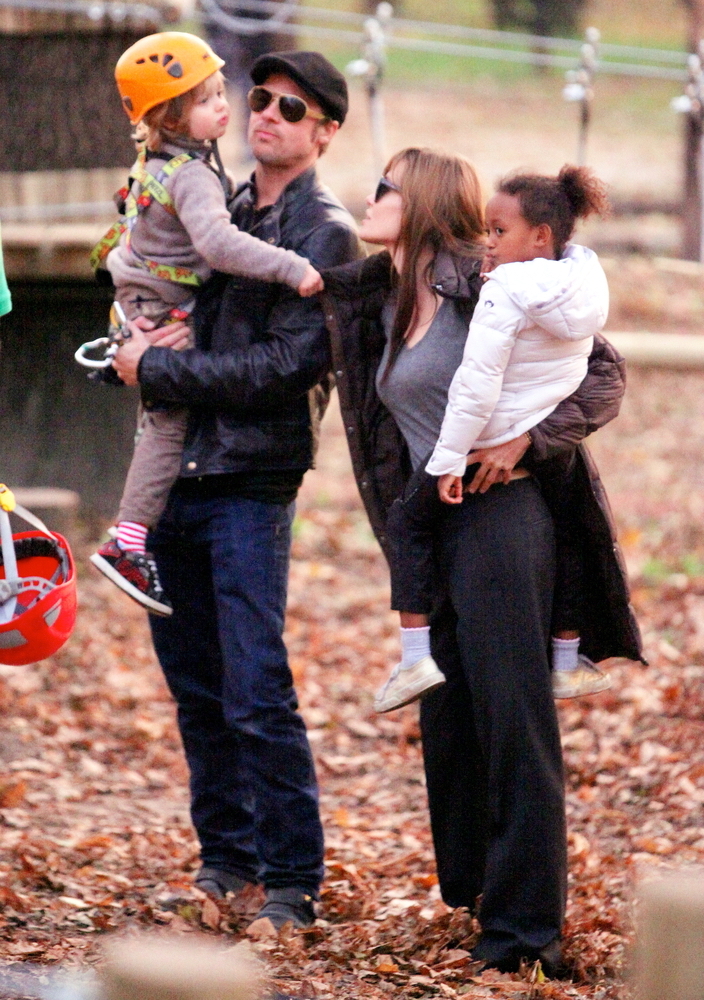How Brangelina's Baby Bump Changed Image of Unwed Pregnant Stars

People magazine has drastically changed the way it covers unwed pregnant celebrity couples, and it's largely because of Angelina Jolie and Brad Pitt's relationship, new research finds.
In the 1970s and 1980s, celebrities who got pregnant out of wedlock were often married before the child's birth, said study researcher Hanna Grol-Prokopczyk, an assistant professor of sociology at the University at Buffalo, State University of New York.
When People announced pregnancy news, it would also include an approximate wedding date on its front cover. That changed when Jolie and Pitt revealed their pregnancy in 2006, but made no public announcement of either engagement or marriage, Grol-Prokopczyk said. Eventually, People stopped asking whether the couple would wed, at least on its front cover. [The 10 Most Surprising Sex Statistics]
This coverage may have indulged readers in celebrity gossip, but it also catalyzed a larger movement — mainly, making it more OK for a couple to be pregnant without news of wedding bells in their future, the new study suggests.
"Overall, People's coverage appears likely to have contributed to destigmatization of nonmarital fertility " Grol-Prokopczyk told Live Science.
Pregnancy news
The idea for the project began during Grol-Prokopczyk's pregnancy in 2006, when she signed up to get an email alert every time there was an online news story about pregnancy.
"I was expecting to get stories about nutrition during pregnancy, or how to avoid complications during birth," she said. "Instead, over 90 percent of those stories emailed to me were about celebrity pregnancies."
Get the world’s most fascinating discoveries delivered straight to your inbox.
After scanning the headlines, Grol-Prokopczyk said she realized that many of the celebrities were having babies out of wedlock. That struck her as curious, as she remembered that popular culture used to stigmatize unwed, expectant couples, she said.
To learn more, she sifted through every cover of People magazine published from its inaugural year in 1974 to 2014. People magazine had the ninth highest magazine circulation in the United States in 2013, according to the Alliance for Audited Media, making it a useful proxy for popular culture at large, Grol-Prokopczyk said.
In all, she and her research assistants found 384 stories on celebrity pregnancies, and coded each one, including whether the parents were dating, engaged, married or not in a relationship at the time the pregnancy was announced on the magazine's cover.
Overall, People almost always celebrated pregnancies, even if the couple was unwed, Grol-Prokopczyk found. "However, before the early 2000s, such events were covered relatively rarely, and were usually paired with promise of imminent marriage, or of compensatory social support," she wrote in the study.
For instance, when Melanie Griffith and Don Johnson announced that they were expecting, the February 1989 cover said that "Melanie's ecstatic and Don says he got 'completely stupid' when he heard the news," followed by "They're thinking April wedding."
Brangelina's baby bump
However, Jolie and Pitt completely changed that dynamic, meaning People could no longer assure readers that a wedding was on the horizon for expectant couples.
A few other celebrity power couples had already challenged the model, Grol-Prokopczyk said. For instance, Tom Cruise and Katie Holmes announced their pregnancy and engagement at basically the same time, and they postponed marriage until after the baby was born. [10 Celebrities with Chronic Illnesses]
"That was different than the 1970s and 1980s models," Grol-Prokopczyk said. "But they still announced the engagement very quickly, and they did marry shortly after the baby was born."
But Jolie and Pitt "refused to call themselves engaged, and refused to promise that they were going to marry soon," she said. "So People sort of dropped the topic."
The couple eventually married in 2014, eight years after the birth of their first biological child.
Grol-Prokopczyk called Brangelina "a turning point. It seemed to be the point when couples could have children out of wedlock without having to promise that marriage was coming."
Nowadays, People frequently covers out-of-wedlock pregnancies, and tends to treat engagements with the same reverence as it used to treat wedding announcements, Grol-Prokopczyk said.
The findings are "absolutely right on… the most interesting moment to me is that it does shift with Brad and Angelina," said Renée Cramer, a professor of law, politics and society at Drake University in Ohio, and author of "Pregnant with the Stars: Watching and Wanting the Celebrity Baby Bump" (Stanford University Press, 2015).
"I think people who worry about the way culture is turning probably are right to worry," said Cramer, who was not involved in the new research. "People magazine and television shows have tremendous long-term cultural impact. They normalize behaviors that have been stigmatized."
Gay and expecting
People magazine has also changed its coverage of pregnant gay celebrities, Grol-Prokopczyk found. Up until the early 2000s, gay couples were basically hidden, she said.
For instance, Jodie Foster and Rosie O'Donnell were both portrayed as single mothers, even though they were in committed, same-sex relationships. In Foster's case, People ran the 1998 headline "And Baby Makes Two," describing her as a single parent even though she had a partner.
"It says something about the values of that time period that celebrities preferred to be presented as single parents than to be presented as gay," Grol-Prokopczyk said.
People magazine did not respond to a request to comment.
The research was presented at the American Sociological Association's annual meeting in Seattle in August. It has yet to be published in a peer-reviewed journal.
Original article on Live Science.

Laura is the managing editor at Live Science. She also runs the archaeology section and the Life's Little Mysteries series. Her work has appeared in The New York Times, Scholastic, Popular Science and Spectrum, a site on autism research. She has won multiple awards from the Society of Professional Journalists and the Washington Newspaper Publishers Association for her reporting at a weekly newspaper near Seattle. Laura holds a bachelor's degree in English literature and psychology from Washington University in St. Louis and a master's degree in science writing from NYU.




